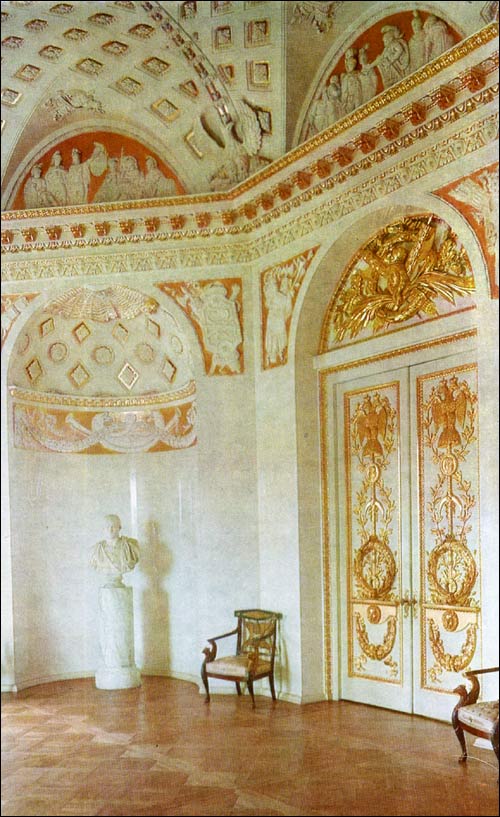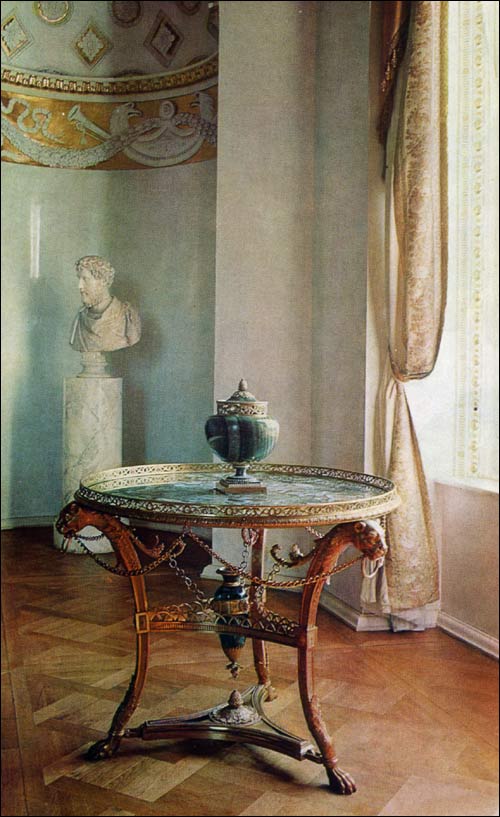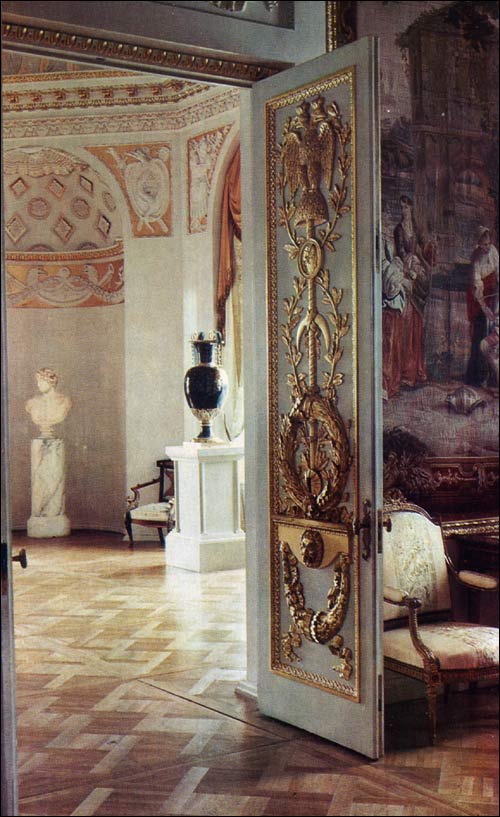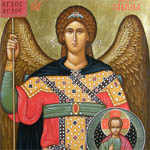Here 's an introduction to ikons with a big gallery of images to browse.

|


The Hall of War, serving as a Presence Chamber, was entered from Paul I's private suite of rooms. I Cameron planned the Halls of War and Peace as state drawing-rooms, and sets of carved and gilded I chairs and semicircular sofas shaped to fit the recesses in the walls were ordered for them from Henri Jacob in Paris. No record remains of Cameron's projected decoration for these interiors, and they were finished, in 1789, in accordance with designs worked out by Brenna.
The Hall of War was embellished with a ceiling fresco painted by Brenna himself with the assistance of Johann Jakob Mettenleiter; it perished in the fire of 1803. A "military" atmosphere was given the hall by magnificent carved and gilded floor lamps with standards composed of lictors' fasces and swords, shields and helmets of Roman legionaries. Though relatively small, it is sumptuously decorated and quite impressive. Its rich mouldings, the glitter of gold set off by the white stucco of the walls, and the flood of light streaming in through the tall windows - all join to lend it a festive and stately air. The walls are decorated in bas-relief with Roman trophies and garlands of interwoven oak and laurel, leaves - symbols of power and glory - on a gold background. The hall is octagonal, with niches in the walls, one of which contains a stove embellished with trophies of arms in stucco-work and surmounted by the figure of an eagle (symbolizing Jupiter) on burning bombs: a personification of military might. The ceiling with moulded coffering was done by Voronikhin, as were the eagles on the cornice over the corners, and the classical reliefs in the lunettes, depicting episodes of the Trojan war: these replaced the paintings lost in the fire of 1803. Large plate-glass windows .are calculated to include the landscape into the general decorative scheme of the interior. During Paul I's short reign the Hall of War served as the Emperor's Presence Chamber. Here, facing the arch which leads into the Grecian Hall, against the background of a crimson velvet curtain drawn over the window, under a silver-embroidered and tasselled canopy of the same fabric, stood the Chair of State, a sumptuous gilded armchair designed by Brenna. Court etiquette forbade any other furniture in the room, and in the niches, therefore, instead of settees, stood antique marble busts of Roman emperors (first - second centuries AD). At present there are there: those of Septimius Severus, Heliogabalus and Agrippa. The tripod stand of chased ormolu, with a vase of blue glass suspended from chains within the legs of the tripod, and the top inlaid with Siberian jasper, the work of Russian stone carvers and bronze-workers, is one of the marvels of eighteenth~century craftsmanship. It was used on ceremonial occasions to hold the imperial regalia: the crown, sceptre and orb.    |

|





